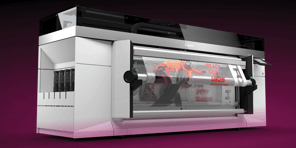Originally Published March 2021
Updated August 2023
Printer security vulnerabilities often fly under the radar.
Many individuals and businesses are unaware of the hidden security risks posed by their printers, making them susceptible to potential attacks.
In this blog, we shed light on common printer security vulnerabilities, the hidden security risks associated with printers and provide practical tips to avoid falling victim to these risks.
The Risks Are Real
A few years ago, CyberNews hijacked close to 28,000 unsecured printers worldwide and forced them to print out a guide on printer security.
They targeted 50,000 devices, which amounted to a 56% success rate. Taking this percentage into account, it’s safe to assume that out of 800,000 internet-connected printers across the world, at least 447,000 are unsecured.
These numbers speak volumes about the general lack of protection of networked devices worldwide.

Imagine walking up to your printer on an unsuspecting Tuesday and finding one of these guides face down on your printer tray – What would you think? How would the IT professionals who work with your printers react?
The demand for printer security within an organization would probably rise after a breach like this.
The intent of this widespread printer breach, thankfully, was not malicious. The attack was meant to be a warning. The hackers weren't trying to steal any valuable business information or client data, but they were trying to prove that many printers are unmanaged and are therefore a network security risk to organizations that may not know any better.
Common Printer Security Vulnerabilities
Some of the most common printer security vulnerabilities include:
- Outdated Firmware and Software: Manufacturers release updates to address security flaws, but many users neglect to install them properly, leaving their printers exposed to known vulnerabilities.
- Default Passwords: Many printers come with default login credentials, which are easily discoverable by potential attackers. Failure to change these default passwords can lead to unauthorized access.
- Lack of Encryption: If data sent to the printer is not encrypted, it can be intercepted by malicious actors, compromising sensitive information.
- Open Ports: Printers with open ports can be exploited as entry points into the network.
- Lack of User Authentication: Printers without proper user authentication can be misused by unauthorized individuals, leading to unauthorized access or unauthorized print jobs.
Hidden Security Risks of Printers
Apart from the common vulnerabilities mentioned above, there are hidden security risks that many users overlook:
- Print Queues: Unattended printouts lying in output trays can be stolen, leading to unauthorized access to sensitive information.
- Hard Drive Data: Many modern printers have internal hard drives that store print history and other data. If these drives are not adequately wiped or protected, they can become a potential data breach point.
- IoT Exploitation: Printers are Internet of Things (IoT) devices, and compromising them can provide attackers with a foothold into your network, leading to more significant security breaches.
- Printer Cache: Printers store data in their cache temporarily. This data can be retrieved and used by attackers if the printer is not adequately secured.
How to Avoid Printer Security Risks
To mitigate printer security risks and enhance the overall security of your printing infrastructure, consider implementing the following best practices:
Regular Firmware Updates
Keep your printer’s firmware and software up-to-date to patch known security vulnerabilities. Stay vigilant and ensure your printers receive the latest updates.
To simplify this process, set up automatic updates whenever possible to minimize the risk of missing critical security updates.
Strong Passwords
Never rely on manufacturer defaults for printer login credentials, as they are often easy to guess.
Change default login credentials to strong, unique passwords and enable multi-factor authentication if available. Furthermore, regularly update your passwords and avoid using the same password for multiple devices or accounts.
Secure Your Printer Networks
Enable encryption for print jobs and data transmission to ensure that sensitive information remains secure.
Maintaining your printer network security is just as important – be sure to regularly audit and update your printer network configurations. Ensure connections and configurations are secure, limiting access to authorized devices only.
Secure Print Release
Implement secure print release mechanisms that require users to authenticate before printing sensitive documents.
Secure/Follow-Me-Printing technologies like uniFLOW and PaperCut help to better manage your print environment by using a single driver for your entire fleet and allowing print jobs to follow a user from device to device and location to location, regardless of make or model.
Strengthen Your Network
Printer security is a critical aspect of overall cybersecurity that is often overlooked. Understanding common printer security vulnerabilities and hidden risks is the first step in safeguarding your sensitive data.
Stay vigilant, keep your printing infrastructure secure and protect your data from potential attacks.
Read Next: Printer Security: Protecting Your Organization from Network Attacks
.jpg)
John Turner is the VP of Customer Success and Managed Print Services at Loffler Companies. He's a big Vikings fan and a crowd favorite around the Loffler office (in addition to his always-positive attitude, he's Loffler's resident baker: he's known to treat everyone to home-made baked goods at several company events!)




